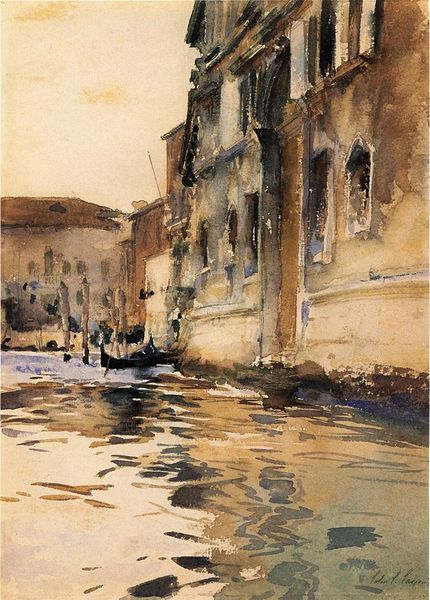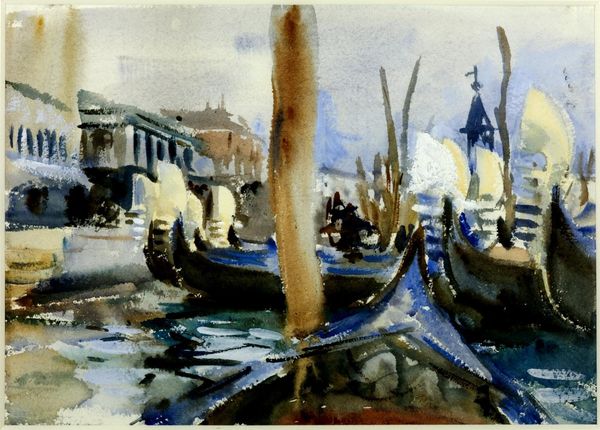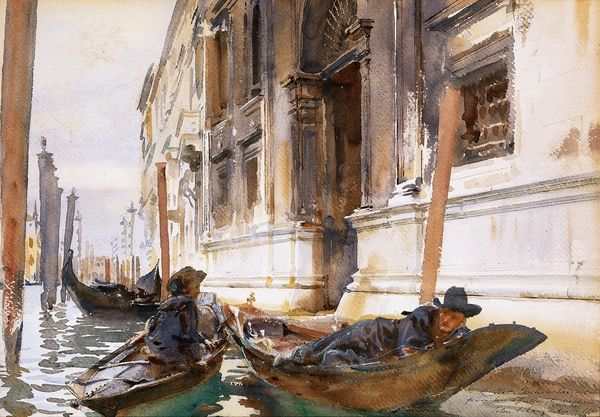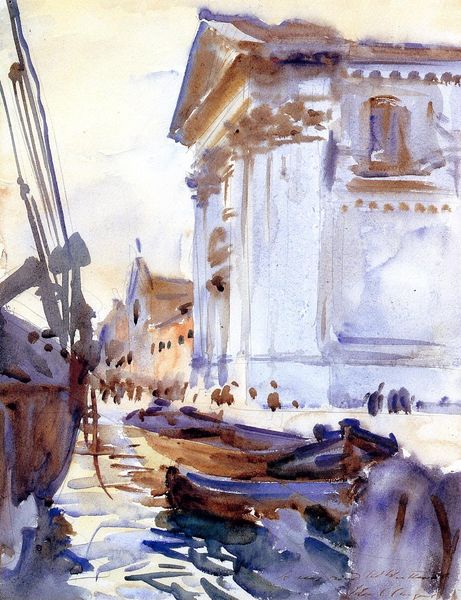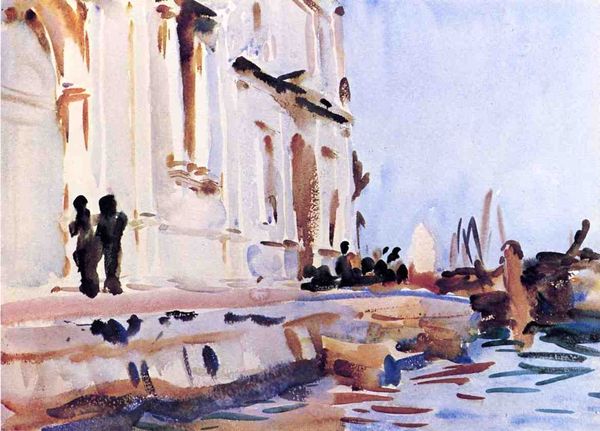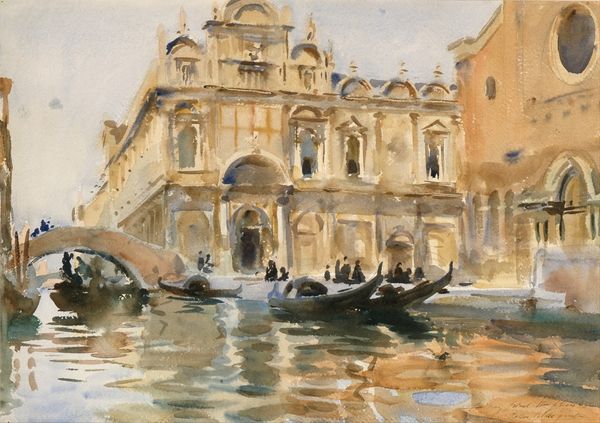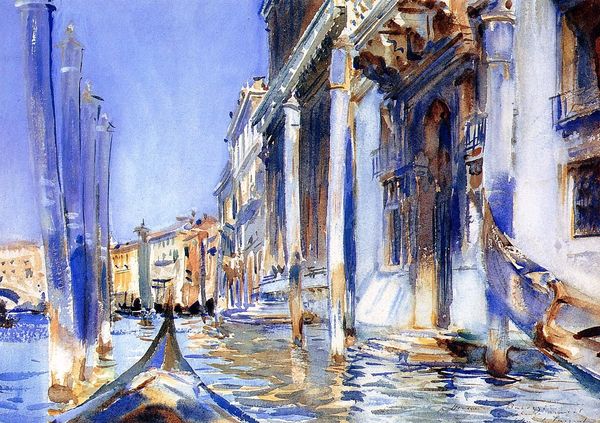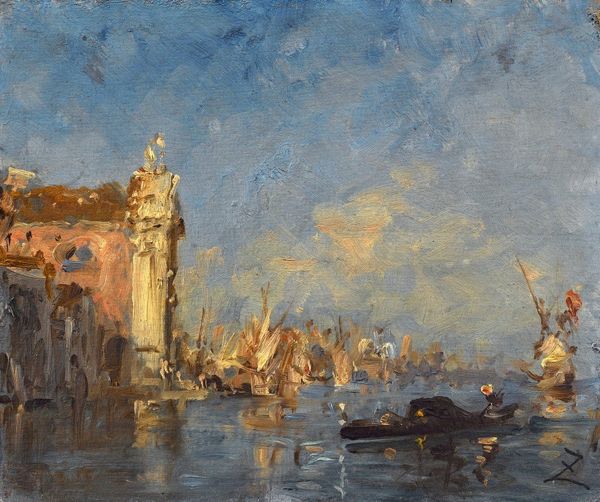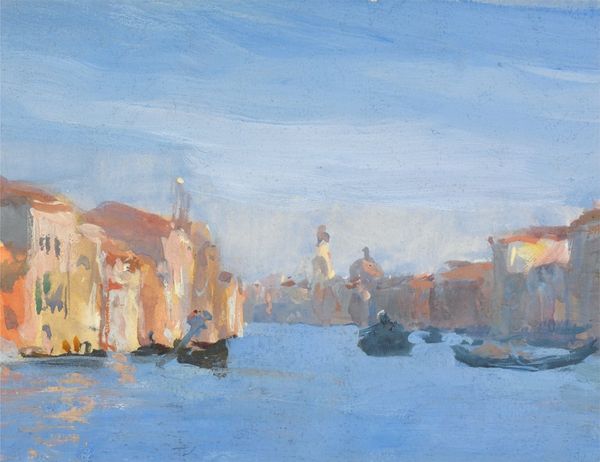
Copyright: Public domain
Editor: So, here we have John Singer Sargent’s "Spirito Santo, Saattera" from 1903. It looks like a watercolor, and there's something really fluid about the way he's captured Venice. It feels like a fleeting moment. What do you see in this piece? Curator: This work is interesting because Sargent is primarily known as a society portraitist. Yet here he is engaging with landscape, using watercolor no less, a medium often associated with amateur practice, to depict the built environment. The materiality is key here. The translucent washes of color allow us to see the paper beneath, flattening the image and emphasizing the constructed nature of representation itself. Consider the speed and economy of gesture required to capture the fleeting light and movement. Is he documenting Venice or actively constructing it as a product, a brand? Editor: That’s fascinating. I hadn't thought about watercolor being associated with amateur work. So, is he intentionally blurring the lines between a quick sketch and a more "serious" oil painting? Curator: Precisely. Think about the burgeoning tourist industry in Venice at this time. These easily portable watercolors were, in a way, a consumable good themselves, souvenirs for the upper classes. This challenges conventional understandings of fine art being distinct from commercial enterprise. What, then, is Sargent doing with his own artistic labor? Editor: So, he's using this "everyday" material to create what looks like a common subject, but he's really questioning value and production. I suppose that changes how I see the boats and buildings here. They're less romantic and more…commodities? Curator: Exactly. It encourages a critical look at how places become spectacles and art objects get entangled with capitalist systems. Editor: This really gives me a new way to look at the painting. It’s not just a pretty picture; it's a reflection of a whole economic and social structure. Thank you!
Comments
No comments
Be the first to comment and join the conversation on the ultimate creative platform.
